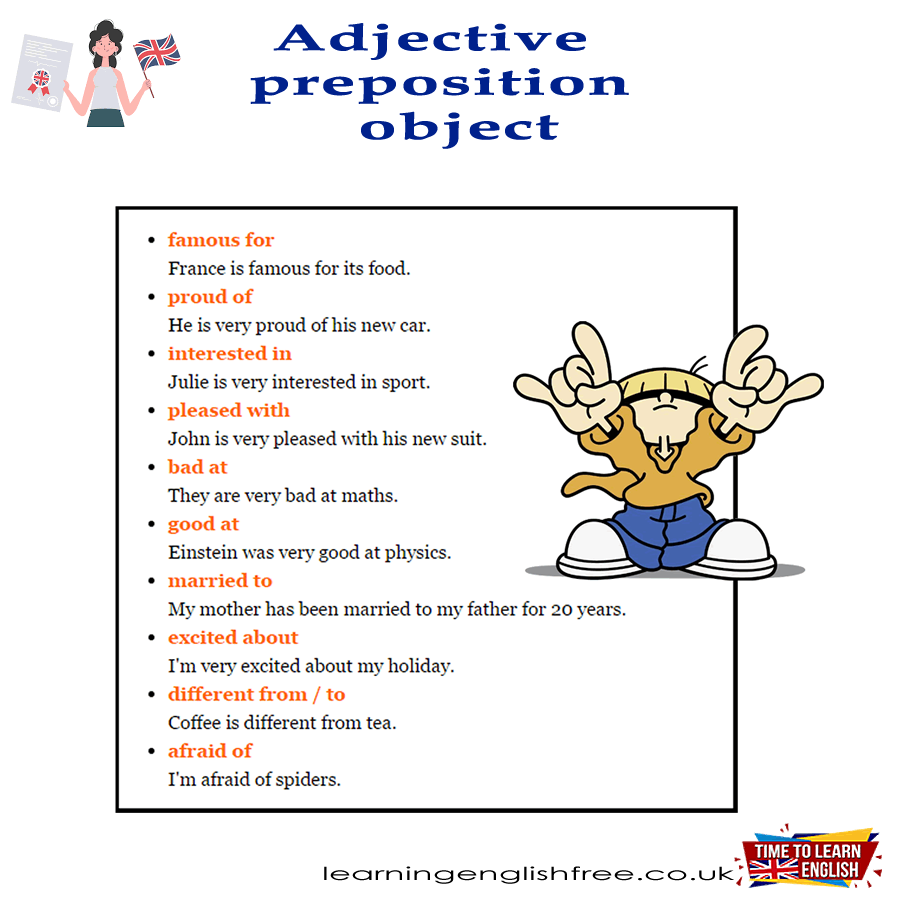
Enhancing Language Skills with Adjective-Preposition-Object Structures
Crafting Precise and Expressive Sentences in English
Understanding the relationship between adjectives, prepositions, and objects is key to forming more expressive and precise sentences in English. This lesson explores various combinations of these elements, enabling learners to communicate more effectively and accurately.
Learning Objectives:
- Grasp the concept of adjective-preposition-object combinations.
- Learn common combinations and their appropriate contexts.
- Apply these structures in everyday English for clearer expression.
Useful Vocabulary:
Adjective, preposition, object, language structure.
Part 1: Common Adjective-Preposition-Object Combinations
-
Famous For
- Example: France is famous for its food.
-
Proud Of
- Example: He is very proud of his new car.
-
Interested In
- Example: Julie is very interested in sport.
-
Pleased With
- Example: John is very pleased with his new suit.
-
Bad At
- Example: They are very bad at maths.
-
Good At
- Example: Einstein was good at physics.
-
Married To
- Example: My mother has been married to my father for 20 years.
-
Excited About
- Example: I'm very excited about my holiday.
-
Different From/To
- Example: Coffee is different from tea.
-
Afraid Of
- Example: I'm afraid of spiders.
Part 2: Applying Adjective-Preposition-Object Structures in Context
- Practice forming sentences using these structures in different contexts.
- Understand the nuances in meaning that these combinations bring to a sentence.
The Art of Expressive Language
Broadening Language Skills
Through this lesson, you have expanded your understanding of adjective-preposition-object combinations, essential for articulate and nuanced expression in English.
Remembering the Combinations
- Mnemonic Devices: Create associations or mnemonics to remember these combinations.
- Regular Practice: Use these structures in your daily conversations and writing exercises.
Practical Applications
- Enhanced Communication: These structures are useful in both formal and informal settings, enhancing clarity and preciseness in your language.
- Creative Writing: Experiment with these combinations in creative writing to add depth to your descriptions and narratives.
Continuous Learning
Language learning is an ongoing process. Keep practicing, and visit our Facebook page at www.facebook.com/learningenglishfree.co.uk for more resources and lessons.
Sharing Knowledge
Discuss these structures with peers or use them in teaching scenarios to reinforce your understanding and assist others in their learning journey.
